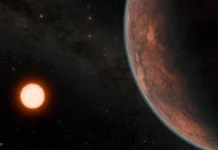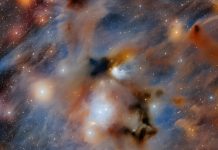
The mesmerizing aurorae, known as the Northern and Southern Lights on Earth, have captivated humans for centuries.
Between May 10 and 12, 2024, a spectacular aurora event—the most powerful in 21 years—reminded us of their breathtaking beauty.
Recently, scientists have made a breakthrough in understanding these celestial light shows, not just on Earth, but across other planets like Jupiter and Saturn.
A team of space physicists from The University of Hong Kong (HKU), led by Professor Binzheng Zhang, Professor Zhonghua Yao, and Dr. Junjie Chen, along with international collaborators, published their findings in Nature Astronomy.
Their research sheds light on the fundamental laws that govern the diverse aurorae seen on different planets.
This new understanding could improve space weather forecasting, guide future space missions, and inspire further studies of planetary environments.
Aurorae, such as those on Earth, Saturn, and Jupiter, occur when energetic particles from space interact with a planet’s magnetic field, causing stunning light displays in the polar regions.
Despite the similar underlying process, aurorae on these planets differ significantly due to varying factors like magnetic strength, rotation speed, solar wind conditions, and moon activities.
Until now, it was unclear how these differences influenced the unique auroral structures observed on each planet.
The research team used three-dimensional magnetohydrodynamics calculations to model the interactions between electrically conducting fluids and electromagnetic fields.
This approach allowed them to assess the impact of different conditions on the auroral patterns of Earth, Saturn, and Jupiter.
By combining solar wind conditions and planetary rotation, the scientists identified a new parameter that controls the main auroral structure.
This parameter explains, for the first time, the different auroral shapes observed on these planets.
Their study reveals that the interplay between solar wind and planetary rotation is key to understanding aurorae across our solar system.
Professor Binzheng Zhang, the principal investigator and first author of the project, highlighted the broader implications of their findings: “Our study has revealed the complex interactions between solar wind and planetary rotation, providing a deeper understanding of aurorae across different planets.
These findings will not only enhance our knowledge of aurorae in our solar system but also potentially extend to the study of aurorae on exoplanets.”
Professor Denis Grodent, co-author of the project and Head of the STAR institute at the University of Liege, expressed his surprise at the unified framework: “We have known that the aurorae on Earth and Jupiter are different since 1979. It is a big surprise that they can be explained by a unified framework.”
This research represents a significant milestone in our understanding of auroral patterns across planets. It has practical applications for monitoring and predicting space weather, as well as exploring the magnetic environments of the solar system.
By advancing our knowledge of how planetary magnetic fields interact with the solar wind to create auroral displays, this study paves the way for future research into these captivating celestial light shows.
Understanding the diverse aurorae not only deepens our knowledge of planetary space environments but also continues to fuel our fascination with these natural wonders.
Source: University of Hong Kong.



